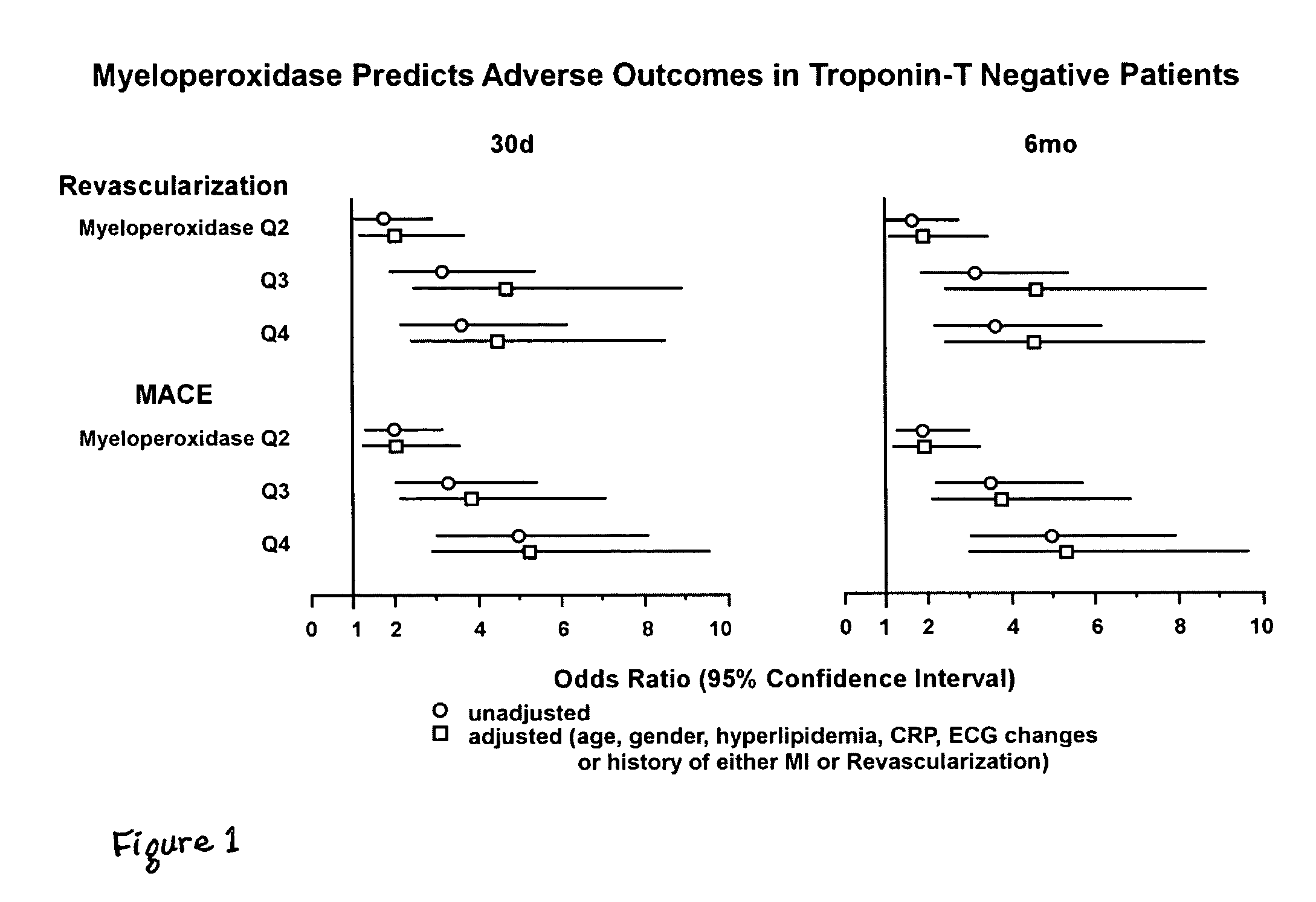Assessing the risk of a major adverse cardiac event in patients with chest pain
- Summary
- Abstract
- Description
- Claims
- Application Information
AI Technical Summary
Benefits of technology
Problems solved by technology
Method used
Image
Examples
examples
[0053]The following examples are for purposes of illustration only and are not intended to limit the scope of the claims which are appended hereto.
Methods
[0054]Study Design: Recruitment occurred as part of a study comparing troponin-T vs. creatine kinase-MB isoform for the diagnosis of myocardial infarction.21 Patients presenting to the Emergency Department with chest pain of suspected cardiac origin within 24 hours of onset were eligible.
[0055]Clinical Diagnosis: Myocardial infarction was defined by positive troponin-T (≧0.1 ng / ml). Unstable angina was ascertained based on the presence of angina at rest, sudden increase in episodes of previously stable angina, ST segment depression, or T wave inversions, as described.21 ECG data were verified independently by blinded ECG core facility personnel. Diagnosis of acute coronary syndrome was adjudicated based on myocardial infarction or unstable angina, as defined by protocol, and confirmed by chart review by a blinded investigator.
[0056...
PUM
 Login to View More
Login to View More Abstract
Description
Claims
Application Information
 Login to View More
Login to View More - R&D
- Intellectual Property
- Life Sciences
- Materials
- Tech Scout
- Unparalleled Data Quality
- Higher Quality Content
- 60% Fewer Hallucinations
Browse by: Latest US Patents, China's latest patents, Technical Efficacy Thesaurus, Application Domain, Technology Topic, Popular Technical Reports.
© 2025 PatSnap. All rights reserved.Legal|Privacy policy|Modern Slavery Act Transparency Statement|Sitemap|About US| Contact US: help@patsnap.com


